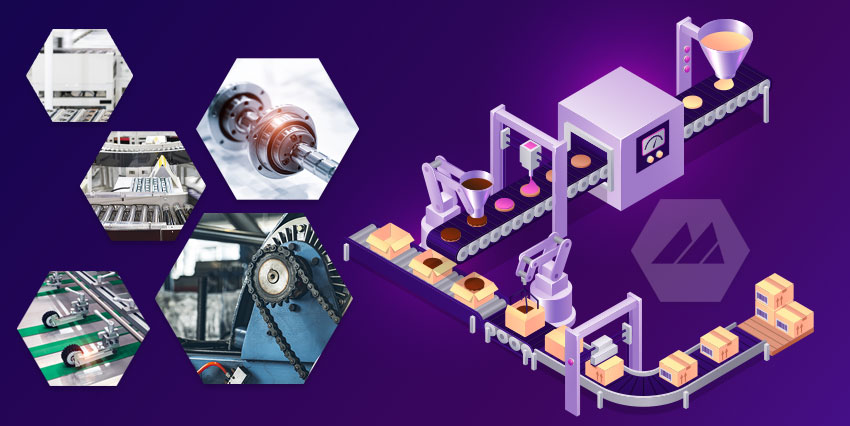Most conveyor systems that you use for light and medium weight items include belts that have two or more pulley wrapped around them. A motor then, powers the pulleys, engaging the conveyor belts to start their rotation.
Belt styles and materials vary in correspondence with the products that they will handle. For example, you need to slide some products across the belt and hence, some belts are low friction material. Businesses that use low friction belts are usually ones that deal with discrete products such as food items that need packaging.
On the other hand, some belts are high friction that helps in holding products in place. These belts are more suitable for bulky and heavy items that run the risk of damages. Engineers design conveyors that meet exact applications and specifications.
Furthermore, timing belt conveyors use toothed belts, which helps engage drive pulleys, while serving as the surface of conveyors as well. This helps provide sufficient control of belt movement for accurate conveyor system parts or fixture positioning.
Magnetic Conveyor System
Magnetic conveyors have ceramic magnets for applications that conveyor system parts that adhere to jobs that require elevation. Higher magnet strength is likely to serve inverted applications.
Vacuum Conveyor Systems
Vacuum conveyors on the other hand work with a perforated belt that allows air to enter through the grooves in the conveyor plates. This allows it to hold parts on inclines or fast transport.
Bedplates
The bedplates of a conveyor machine can differ in terms of material. Where metal scanning is an important check for products, the conveyor belts will likely consist of polymer bedplates instead of metal bedplates. These items usually consist of food materials to ensure that they do not contain any contaminants in the system.
Pivot Conveyor Systems
These conveyor systems include a base that you can use to swing away when workers need to walk through a line. Some systems include controls that will automatically resume the flow of the product when the conveyor aligns to its base position.
Conveyor Belt Controls
Some conveyor belt systems have controls that follow certain timing. Servo drive can precisely start and set up to the accurate part location. Engineers can also control the assembly line acceleration. Furthermore, encoders can drive shaft sense, or count pulley revolutions for belt control in feeding and indexing.
Components of a Conveyor Belt System
Even though you can find different types of conveyor belts, the fundamental components remain the same. You can find three major parts in a conveyor system, the belt support, the drive unit, and the pulley. Each of them is essential to the conveyor system operation.
Even though every system will consist of these conveyor system parts, there can be subtle differences in the materials and their placements in the conveyor system. The belt support component is responsible for the smooth movement of the belt.
The pulley system component is an external part of the belt that ensures that there is belt movement. The pulleys dictate the system’s movement by taking the movement of the motor and correlating it to the drive drum, which is in turn responsible for moving the conveyor belt.
There are two pulleys in most conveyor belt systems, however, you can also find more. One of the pulleys operates with the help of the rotary power of the motor, while the other sits idle. More complex and sophisticated conveyor belts will have multiple pulleys that run throughout the conveyor belt frame.
The drive drum makes up the major part of the drive unit, and it contributes to the movement of the conveyor belt. Bearings are essential parts of this unit because they allow the machines to rotate and hence, are integral to the rotation of the belt forward, and backward.
If a drive unit is motorized and automated, then encoders and engineers can control the movement of the conveyor belts.
Daniel Szwed - Marketing Manager

Resourceful and innovative Marketing Pro, with 20+ years of progressive experience in the marketing and creative technology industry. Responsible for digital and traditional marketing efforts that promotes brand awareness, increases engagement, and drives revenue.
















